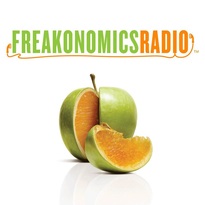
1) Temptation Bundling – this is the idea that people will do things they don’t want to do, if its paired with a reward. For example, someone might only allow themselves to order dessert on days they exercised. Or someone might not allow themselves to watch the newest Game of Thrones episode unless they clean the house first. Makes sense, right?
Temptation bundling is especially powerful in b2b marketing since jobs are work and most people don’t like to do work. Marketers frequently incent prospects with temptation bundling at tradeshows. Giving away USB chargers in exchange for a scan, or watch a demo and get entered in a chance to win an Ipad is temptation bundling. It is not as common in other b2b marketing channels, but it should be!
At Marketo, we ran a successful and repeatable email campaign that was classic temptation bundling. First, we would segment our database to find prospects that were extremely qualified, but had not reached MQL status. Next, we would then send an email offering them a $100 Amazon gift card if they sat through a personalized sales demo. Not only did the campaign always have a great response rate, but it also was fantastic at generating new customers. Why? Temptation bundling pushed prospects to do a thing they knew they should do (evaluate marketing automation), but were not motivated to do right now, that is until we provided a personal incentive ( an Amazon gift card).
Other ideas for b2b marketing campaigns which use temptation bundling:
- Get flowers sent to your significant other if you speak with one of our sales reps
- Meet with us at tradeshow X and we will pick up your uber bill for the week
- Give an Apple watch to a webinar attendee that asks a question on your next webinar
- Win a month of personal trainer use over the holidays if you complete a free trial
- Win chocolate for everyone in your department if you complete an ROI calculator
- Apply for our customer awards and have a famous comedian tweet a joke about you
- Win a chance to VIP your trip to this tradeshow
- Purchase our product this month and get a puppy takeover of your office
- Etc…
2) Fresh Start Effect – why do people set New Years resolutions? Because of the “Fresh Start Effect”! People are more likely to turn “I should do this” into “I am doing this and I am starting today” on dates that begin a time period, i.e. the first day of the year, first day of the month, their birthdays, etc…
Just like New Years resolutions, this effect wears off over time, but it can be a great b2b marketing tactic to use to get people to take a first step. Still, when it comes to creating a marketing calendar, most marketers are more focused on time of day, day of week, and monthly or quarterly quotas . Why not add a couple of fresh start effect campaigns in the mix?
Dates that could be fresh starts effect opportunities for b2b marketers:
- The first day of the month
- The first day of the quarter
- The first day of the fiscal or calendar year
- Prospect’s birthdays
- Prospect’s payday
- Company's birthday
- Budget planning periods
- Prospect’s First day at new job
- Day after major industry events
- Day after your user conference
- Day after tax day
- Day after a customer's renewal
- Day after the SuperBowl or World Cup
- Etc...
The easiest channel to harness the fresh start effect is email, since campaigns can be scheduled for specific days. But webinars, adwords, and any other digital marketing channel could just as easily be run to harness the fresh start effect or to use content that speaks to it.
I love finding inspiration for creative campaigns IRL. And I bet you can find some interesting ways to add both of these tactics to your marketing calendar.


 RSS Feed
RSS Feed